|
|
|
|
|
|
|
|
September 8, 2022 | ISSUE 42 |
|
|
 |
PlanetScope • Lake Valencia, Venezuela • August 12, 2022
|
In this week’s issue: Satellites spot beautiful but deadly algal blooms around the world, glacial flour transforms a lake’s color in Colorado, and policy meets nature in a special border feature. |
|
|
|
|
FEATURED STORYAlgal Blooms
Halloween supplies have hit store shelves, signaling the official end of summer in the northern hemisphere. Yet as the days shorten and temperatures (supposedly) cool, one unassuming organism continues to flourish with impressive zest: phytoplankton. This microscopic-single-celled-aquatic-photosynthetic organism is the foundation of the marine food web. And when conditions are just right, phytoplankton can exponentially grow in events called “algal blooms.”
Blooms occur when the right mixture of warm water, excess nutrients, and sunlight is achieved—making late spring and summer an ideal time for growth. Phytoplankton contain chlorophyll, the green pigment that allows certain organisms to photosynthesize. So as the phytoplankton grow to epic proportions, so too does the green pigment in the water. Together these give rise to their whirls, swirls, and sweeping patterns. In other words: massive algal bloom + satellites in orbit = sublime images.
|
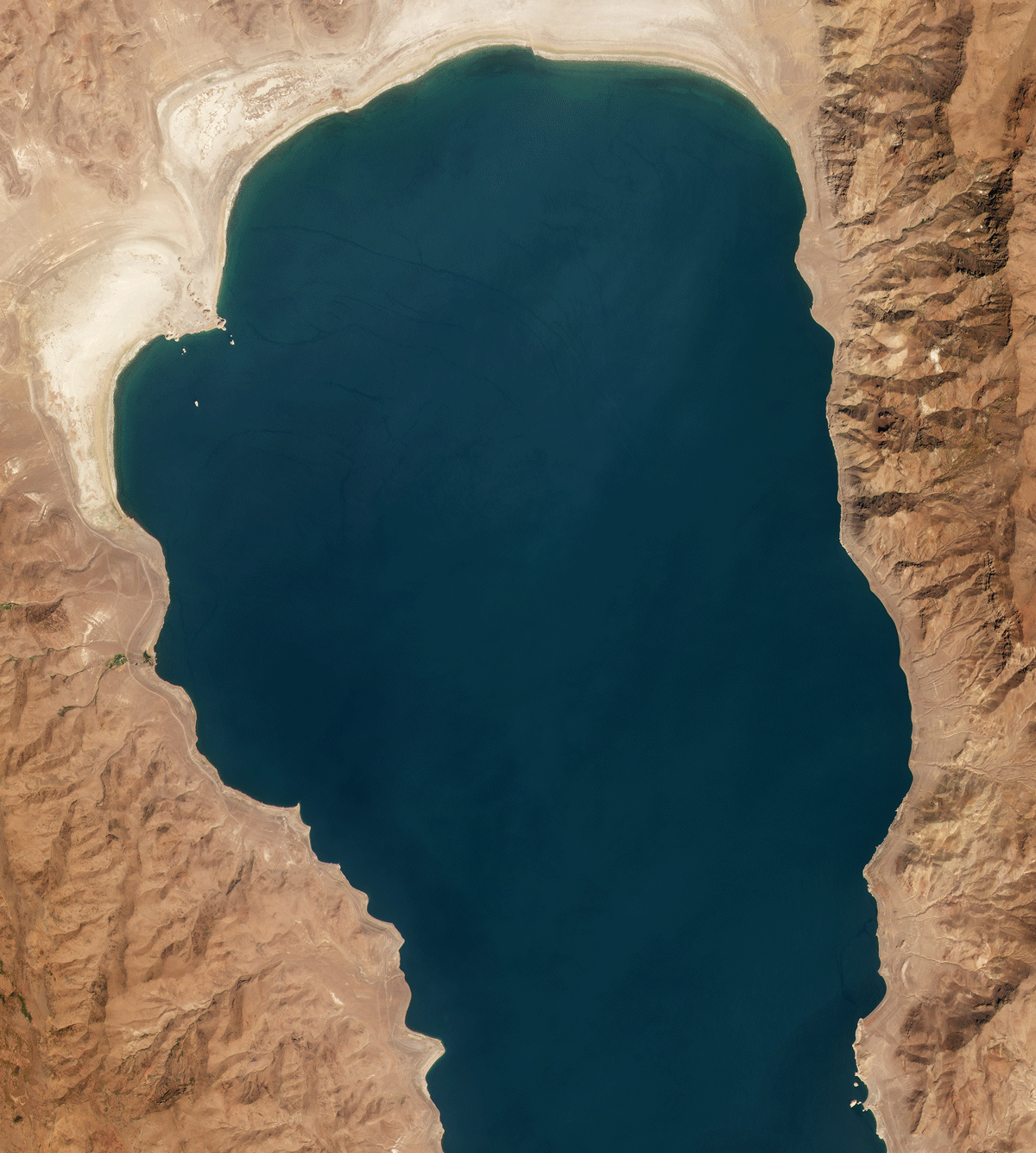 |
PlanetScope • Pyramid Lake, Nevada, USA • August 26 - September 22, 2021 |
Algae encompasses a broad family of plants. And different organisms create different algal blooms (hence the varying colors). But we’re not taxonomists so we’re taking a simplistic approach to classification here. Most of the images in this issue are showing blooms of cyanobacteria, aka blue-green algae, like the above progression in Nevada’s Pyramid Lake. But others, like this summer’s Hood Canal bloom, are caused by coccolithophores, a phytoplankton that turns dark waters a tropical-blue as their calcium carbonate plates reflect sunlight. |
 |
PlanetScope • Hood Canal, Washington, USA • August 15 - 23, 2022 |
Not all algal blooms are harmful. But when they are, they're bad. If you live in the San Francisco Bay Area then you’re likely aware that recent local news coverage has been a mix of “it’s hot” and “we just had the largest algal bloom on record.” Algae needs the right nutrients to bloom, and—in this very specific sense—wastewater from 8 million people is kale-smoothie-caliber nutritious. If there’s one way to excessively ruin a beach day, it’s an algal bloom spurred by human fecal matter. Just ask those who live by Lake Valencia, Venezuela’s largest freshwater lake that hosts rampant blooms from a constant influx of wastewater. |
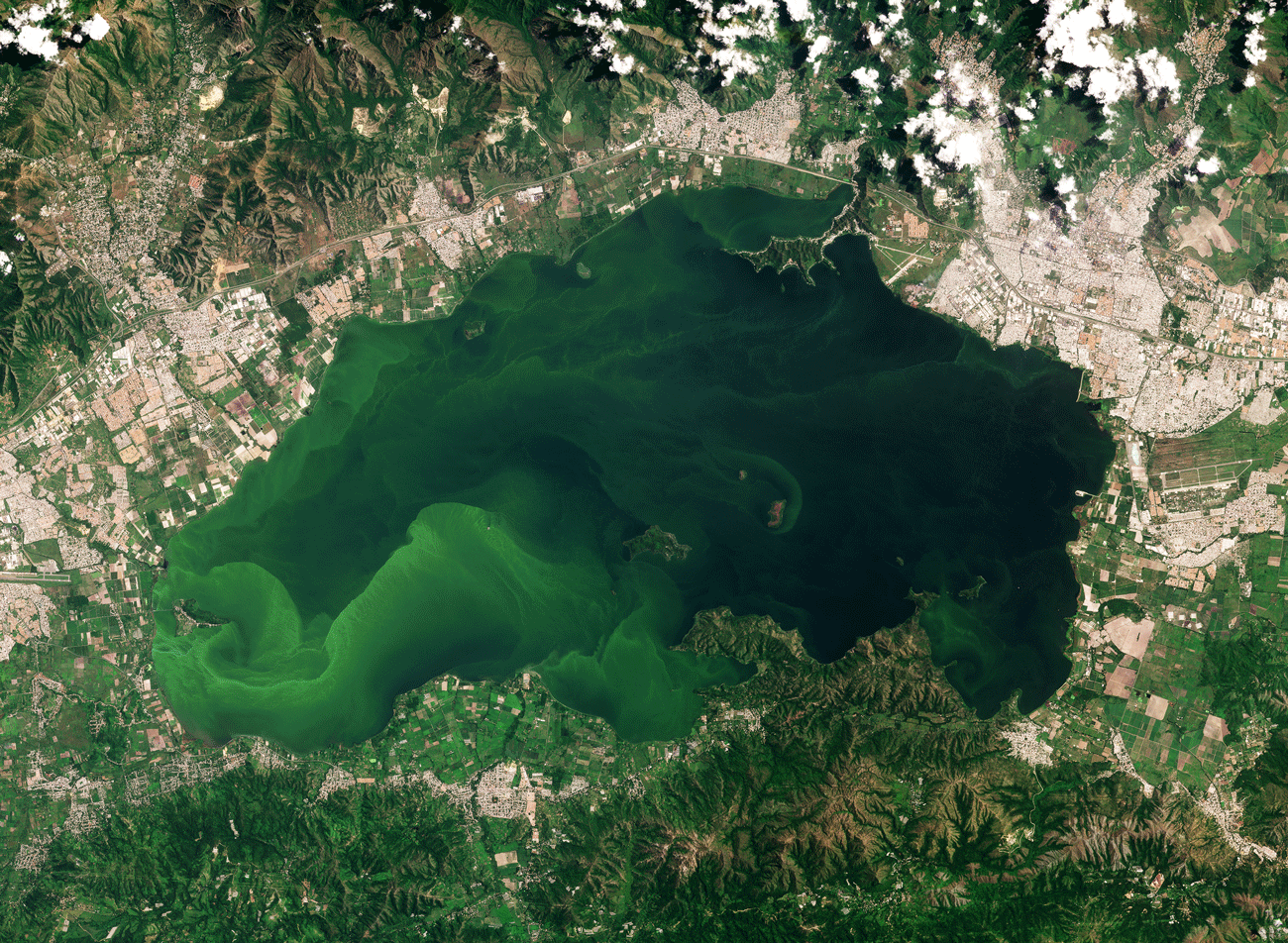 |
PlanetScope • Lake Valencia, Venezuela • July 14 - August 18, 2022 |
Of course, algal blooms have far more serious consequences than interrupting day plans, like producing deadly toxins and infiltrating drinking water. Plus they tend to suck all the air out of the room, making them unpopular at parties and fatal for marine life reliant on oxygen. It’s estimated that the Bay Area’s algal bloom killed tens of thousands of fish and could cost $14 billion in overall damages, and that’s just one of hundreds that happen in the US alone. |
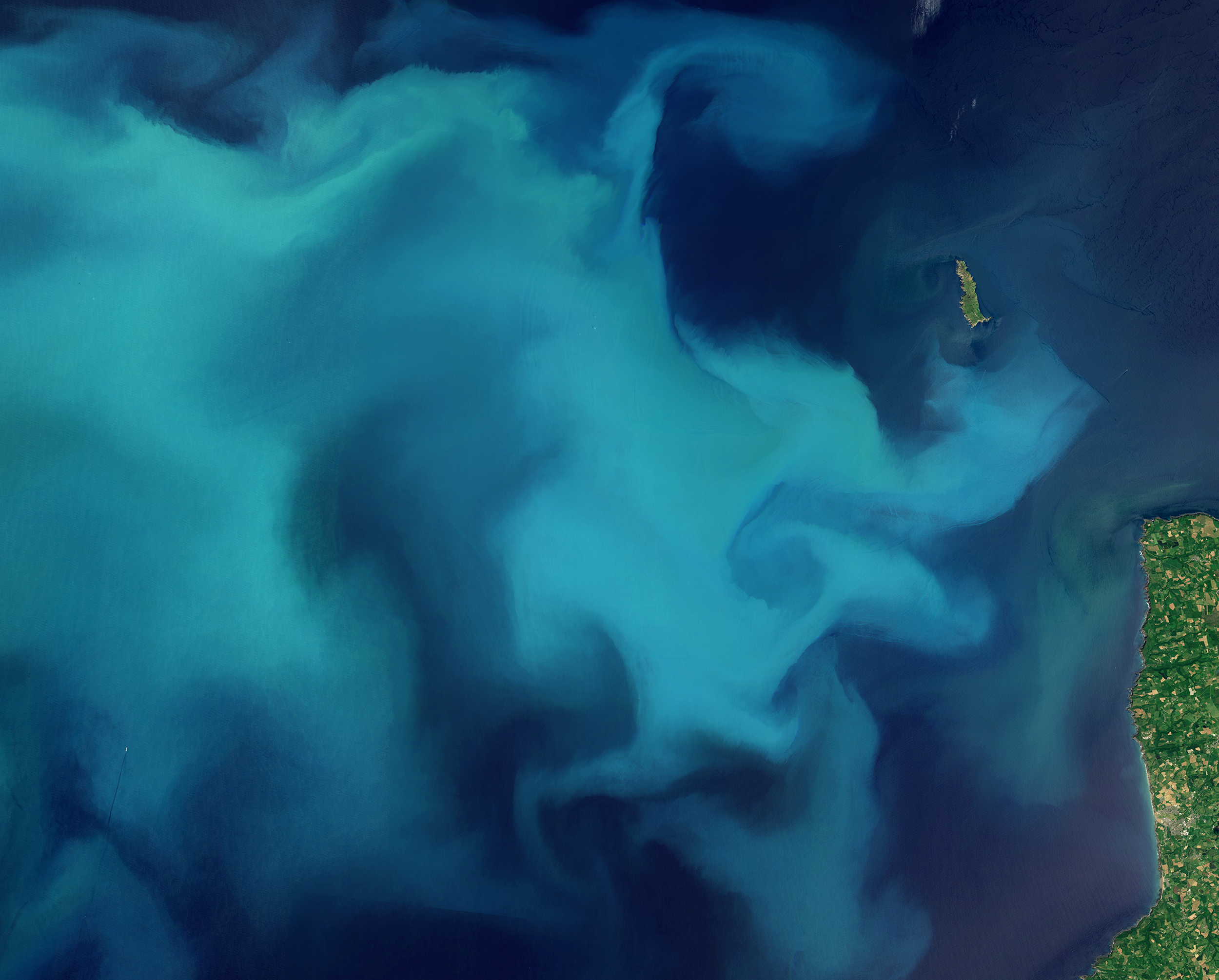 |
PlanetScope • Bristol Channel, Great Britain • June 3, 2022 |
If you thought climate change wasn’t appearing in this story, then think again. Warmer ocean temperatures, greater atmospheric carbon dioxide, and more shallow coastal water are all factors predicted to benefit algal blooms and harm ecosystem health in the future. The good news is that a number of companies are turning to satellite data to help address this growing threat. |
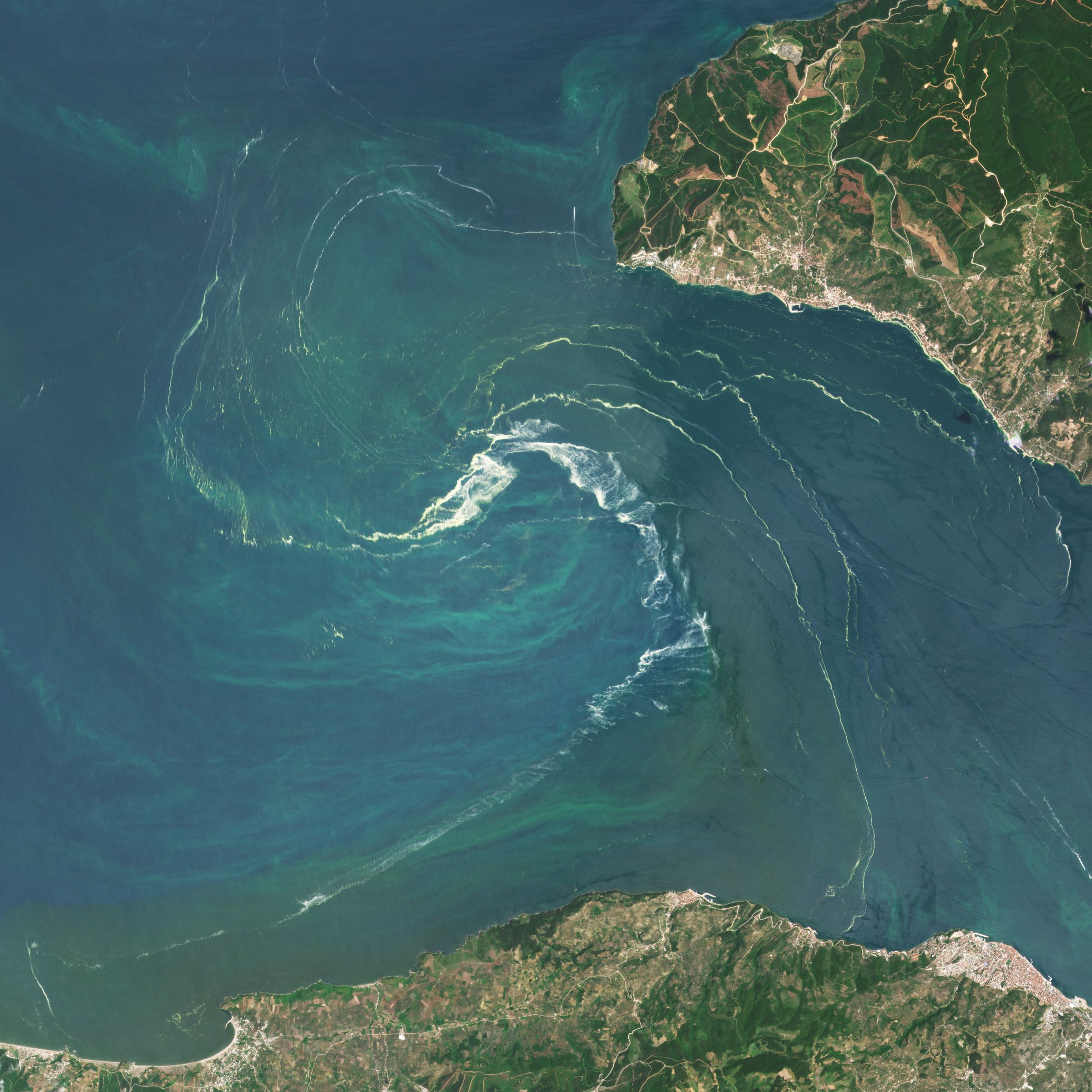 |
PlanetScope • Sea of Marmara, Turkey • June 10, 2021 |
Remember how we mentioned earlier that the green pigment chlorophyll allows satellites to spot algal blooms’ extraordinary patterns? Of course you do. Well that’s what the leftmost panel below shows: a true-color comparison of algae growing in a German lake analyzed by EOMAP. But there's far more data that can be gleaned beyond what the human eye can see here. Satellites capture certain spectral bands that enable researchers at EOMAP to calculate the amount of silt and chlorophyll present in the lake, as seen in the middle panels. And these then inform their assessment on the likelihood of a harmful algal bloom event occurring. |
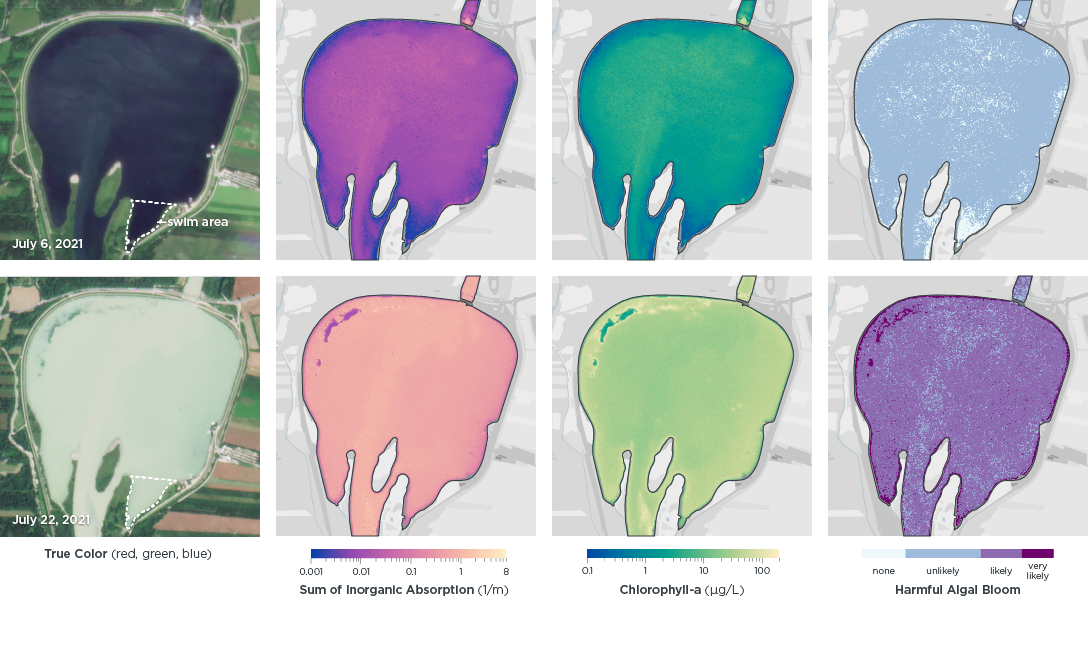 |
|
Planet & EOMAP |
Algal blooms are one of Earth’s many beautiful but deadly features. In a certain respect, they’re kind of like Frankenstein: big, often green, not entirely understood, and sometimes monstrous. Yet just because they’re dangerous doesn’t necessarily mean they’re wicked. Simply that, as with all things liable to get carried away, it’s best to keep a keen eye on them. |
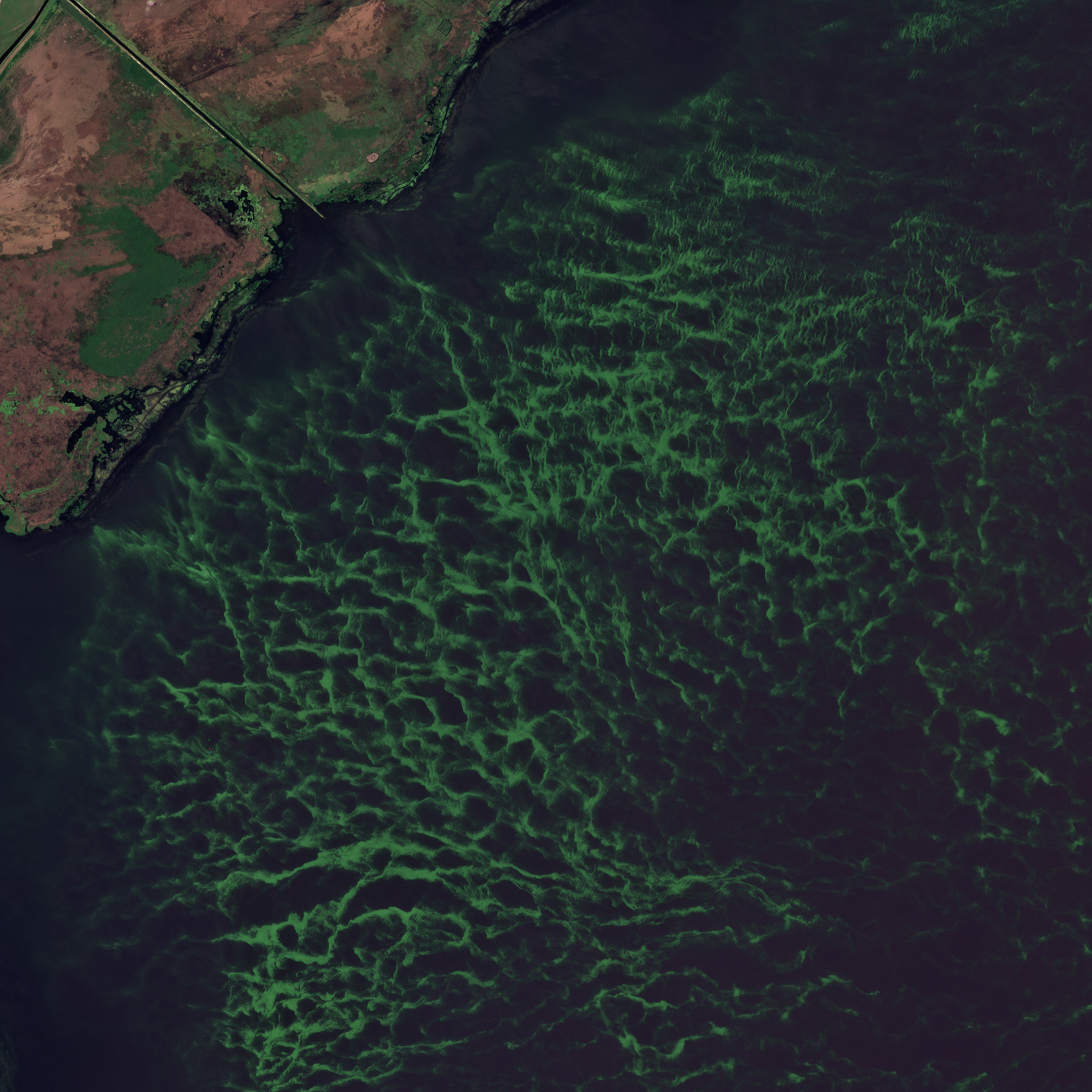 |
PlanetScope • Okeechobee, Florida, USA • May 11, 2021
|
|
|
|
|
|
|
|
|
Change of the Week: Glacial Flour
Not all color-changing water is caused by algal blooms. Some change because of big, fast moving rocks. Back in June, a rockslide brought silt and clay to Lake Haiyaha in the Colorado mountains, creating glacial flour (or rock flour): a fine powder often caused by ice scraping on bedrock that floats in water, turning it a milky bluish-green. Usually glaciers produce the flour over time, but the rockslide reportedly hastened the process in this mini, rapid spectacle. Watch as the Lake Haiyaha changes colors over a month compared to the unvarying dark blue of Emerald Lake in the top left corner.
|
 |
PlanetScope • Lake Haiyaha, Colorado, USA • June 21 - July 21, 2022 |
|
|
|
|
|
Protected Borders
Next week we plan to wrap up our current border series with an issue on Earth’s natural boundaries (check out part 1 for how political borders shape certain landscapes). But during research we discovered a physical division somewhere between the political and natural. These are areas protected by law—part policy, part natural. |
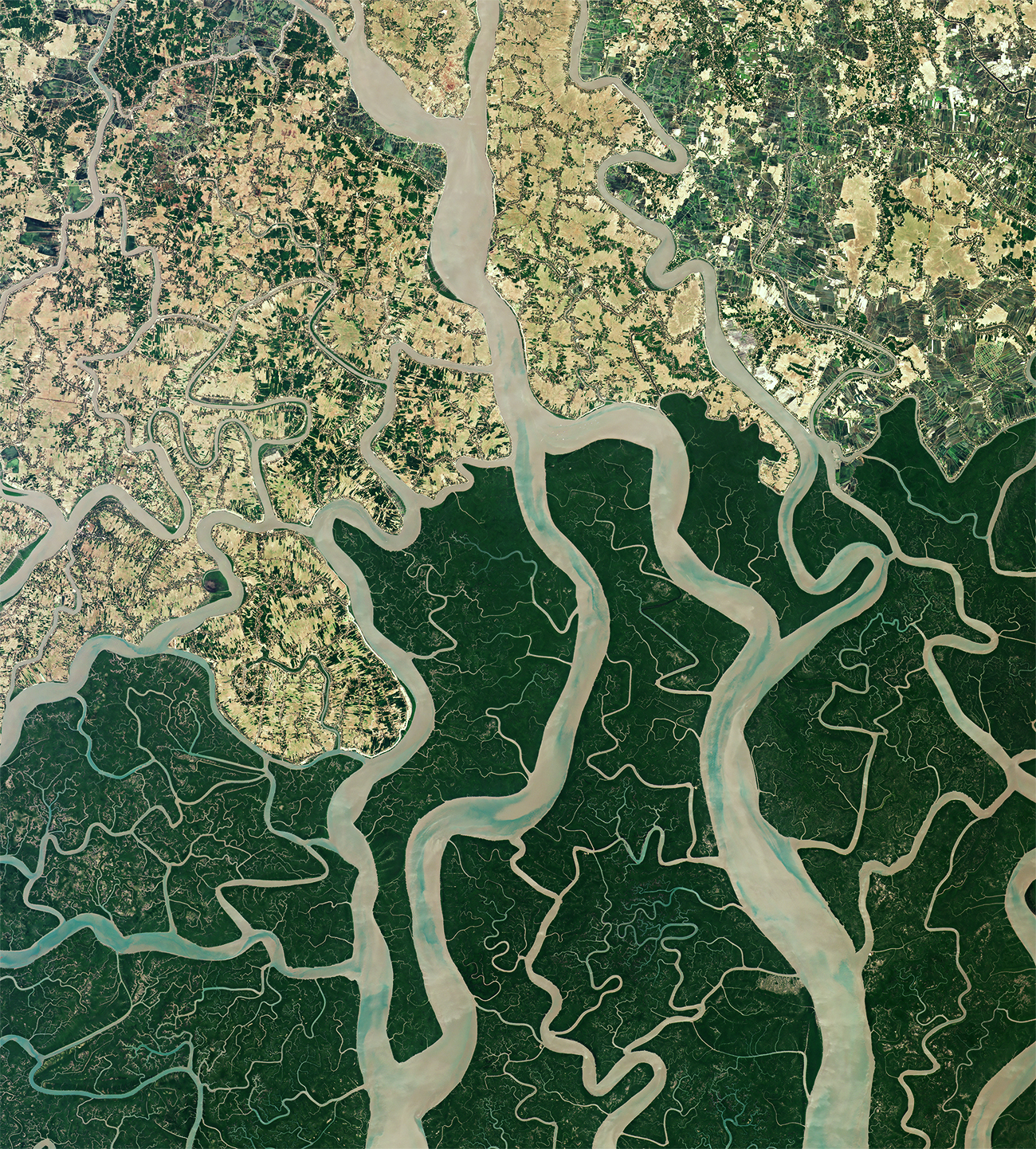 |
PlanetScope • The Sundarbans, India & Bangladesh • March 16, 2021 |
Iguazú National Park in Argentina and Brazil and The Sundarbans in India and Bangladesh are two protected areas that display this contrast strikingly from space. Interestingly, both places have country borders running through them and are UNESCO World Heritage Sites (another issue we have in the works—any place in particular that you want to see from space? Let us know!). Images of protected areas like these help highlight the crucial and real-world impact of policy. |
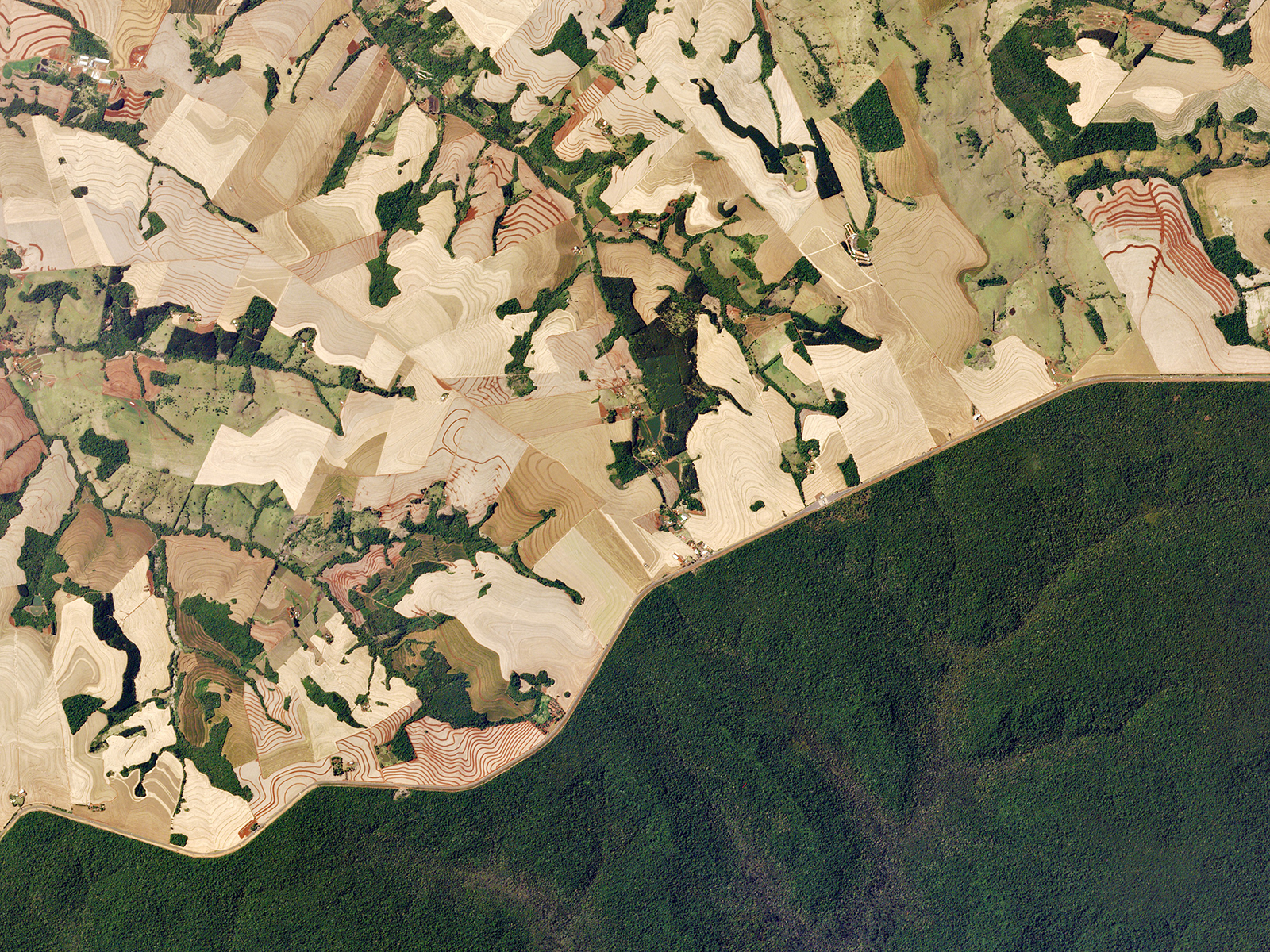 |
PlanetScope • Iguazú National Park, Argentina & Brazil • September 23, 2016 |
|
|
|
|
|
Last Week's Issue: Size Comparisons
In case you missed it, check out last week’s issue on comparing sizes of places from space. It made our editor’s dad question everything he knew about the size of Phoenix, and perhaps it’ll get you reconsidering the size of places too. Plus the whole archive can be found here if you’re extra curious.
|
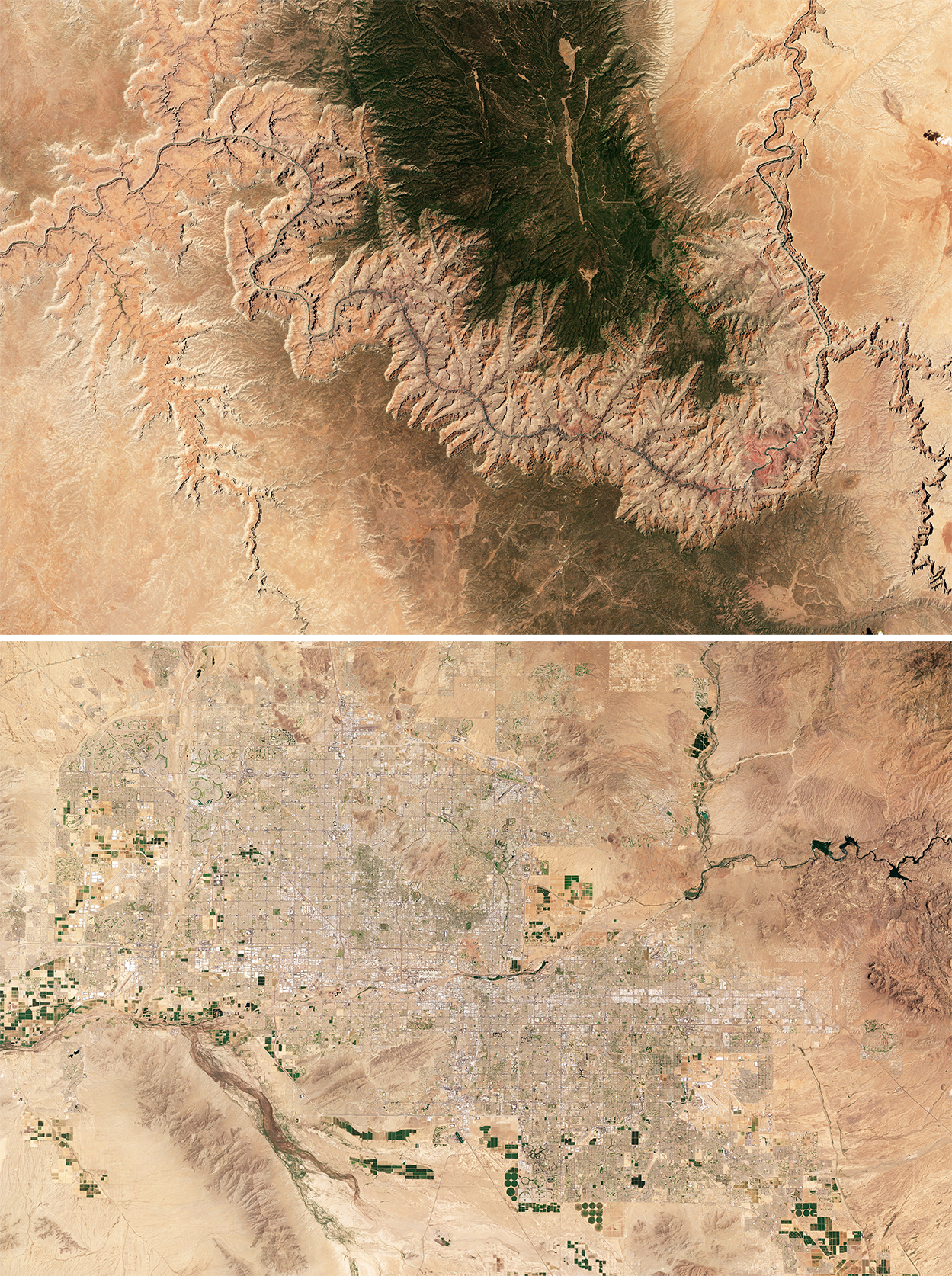 |
PlanetScope • Grand Canyon & Phoenix, Arizona, USA • 108 x 72 km / 67 x 45 mi • June 19 & June 15, 2022 |
|
|
|
|